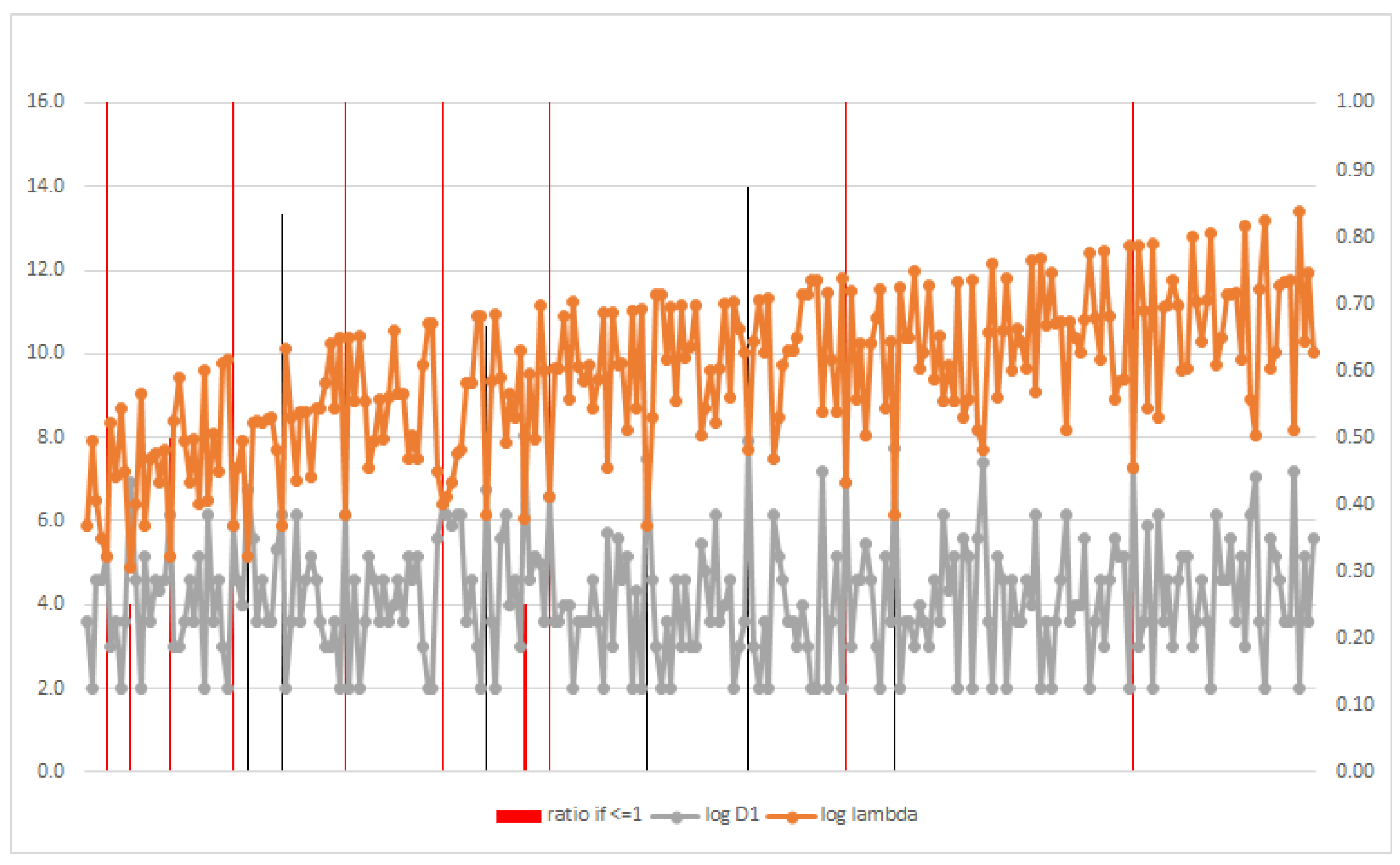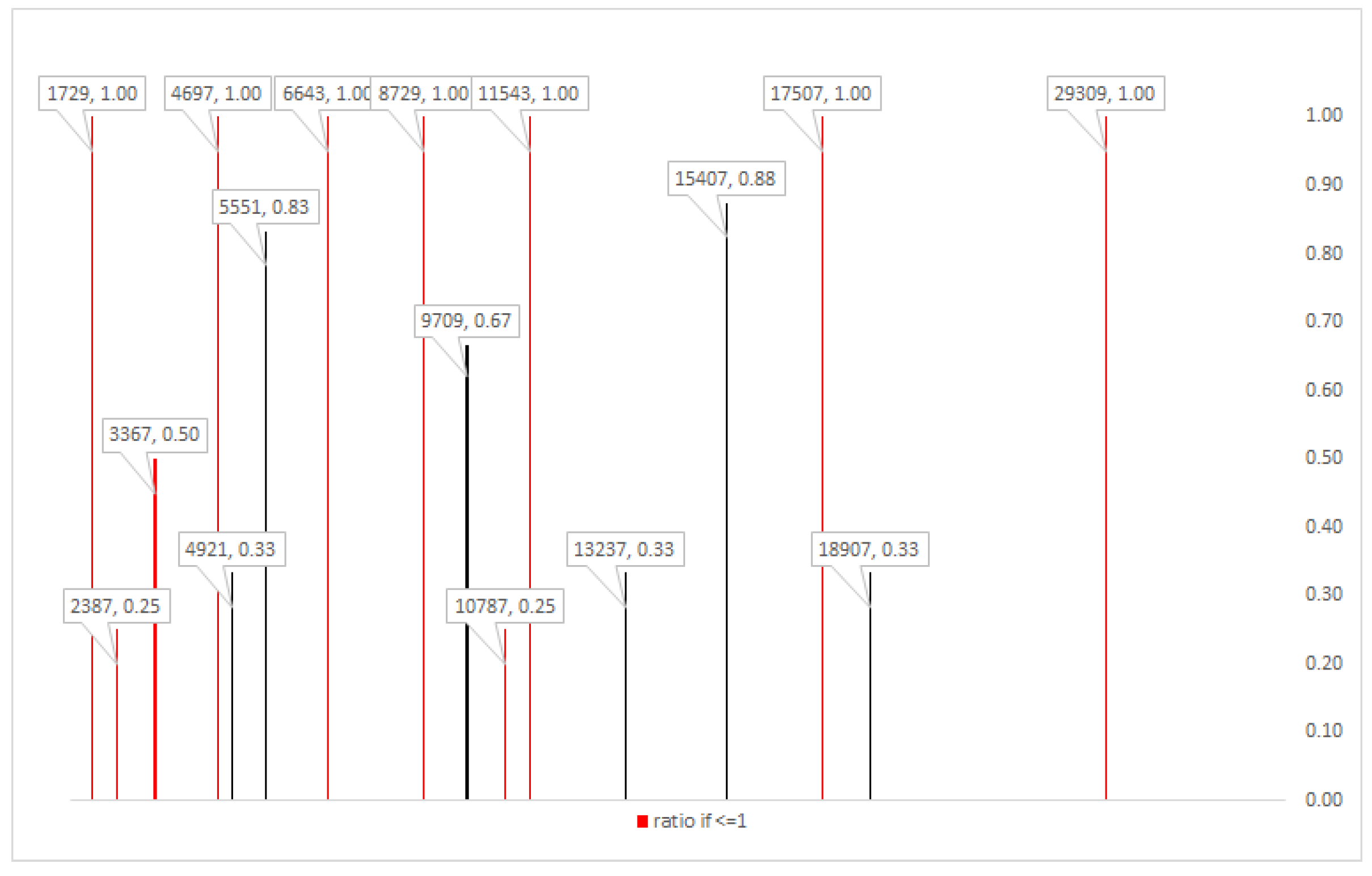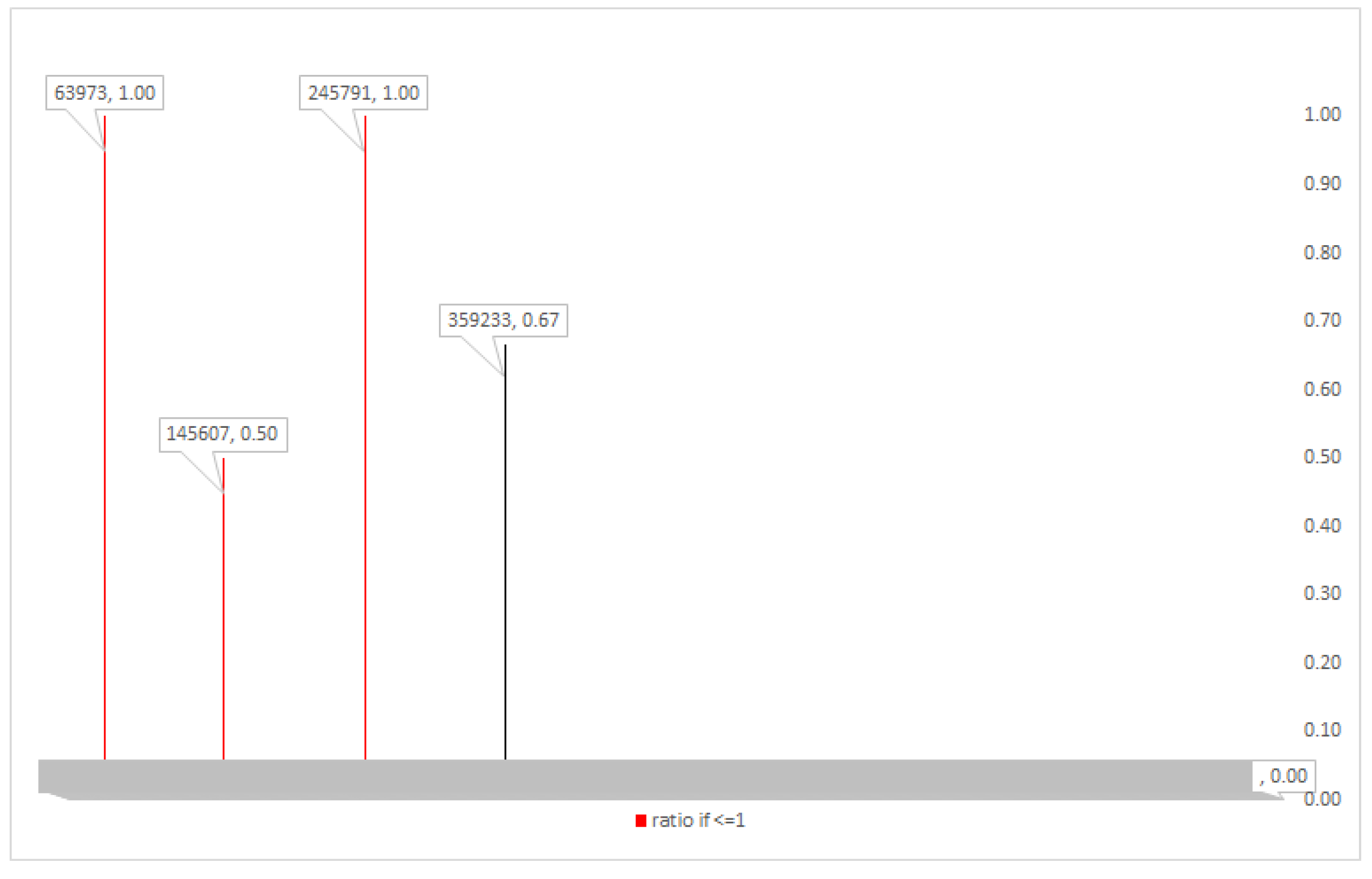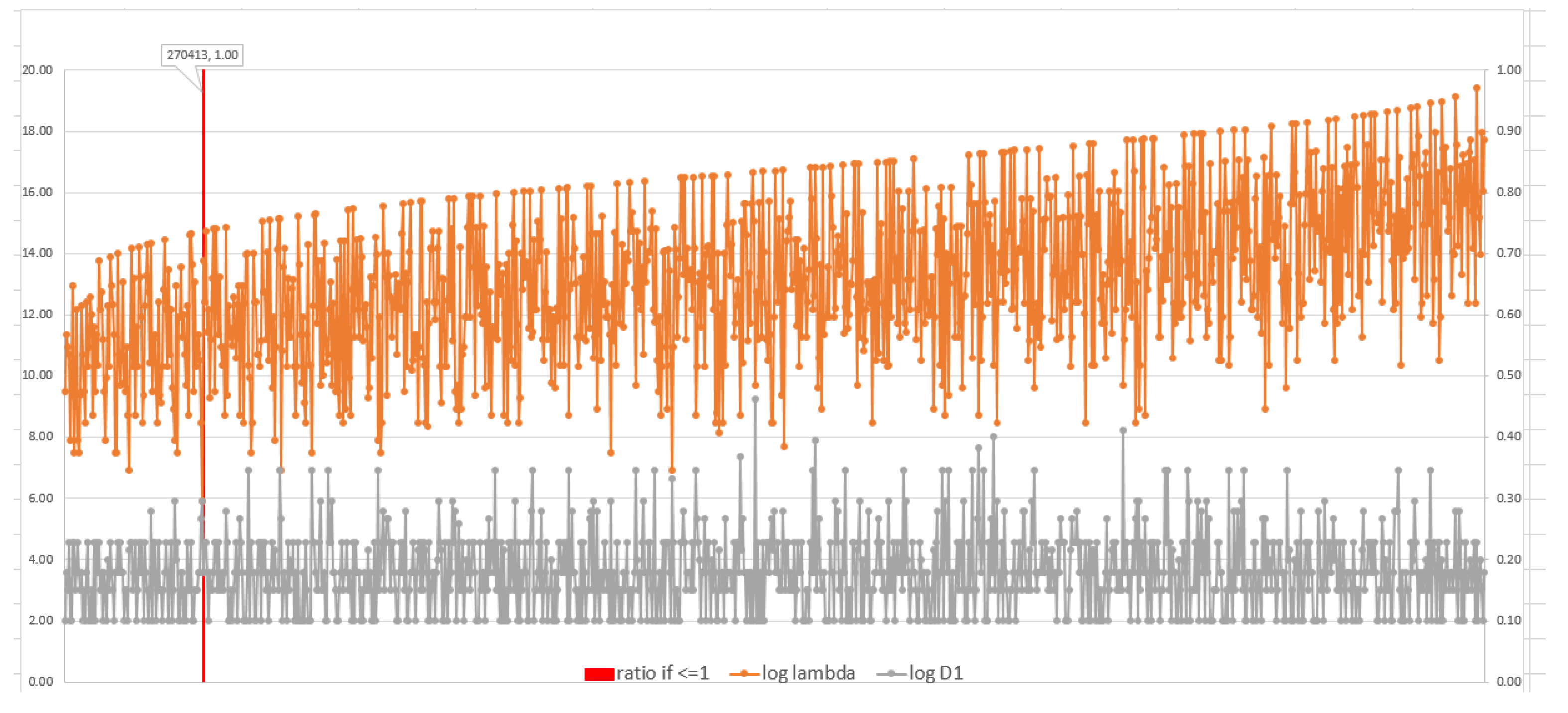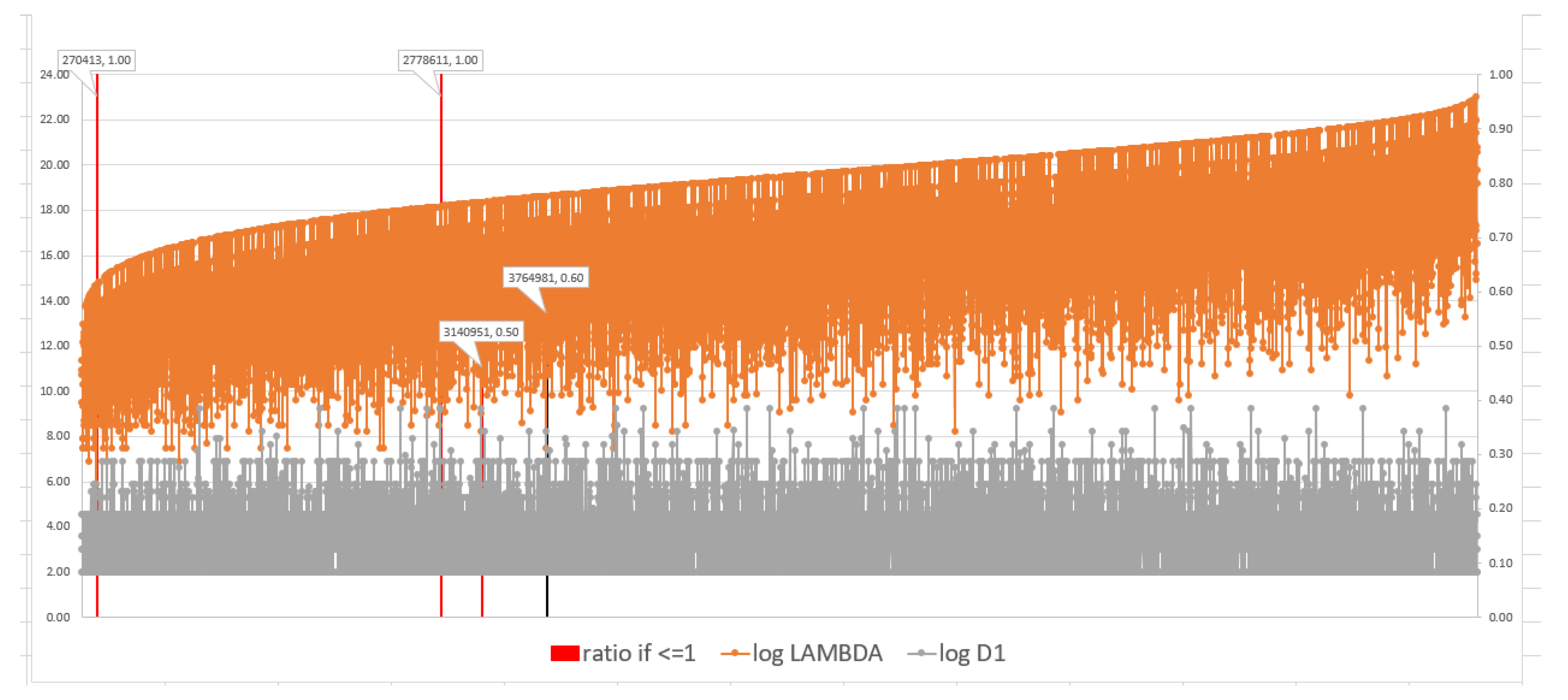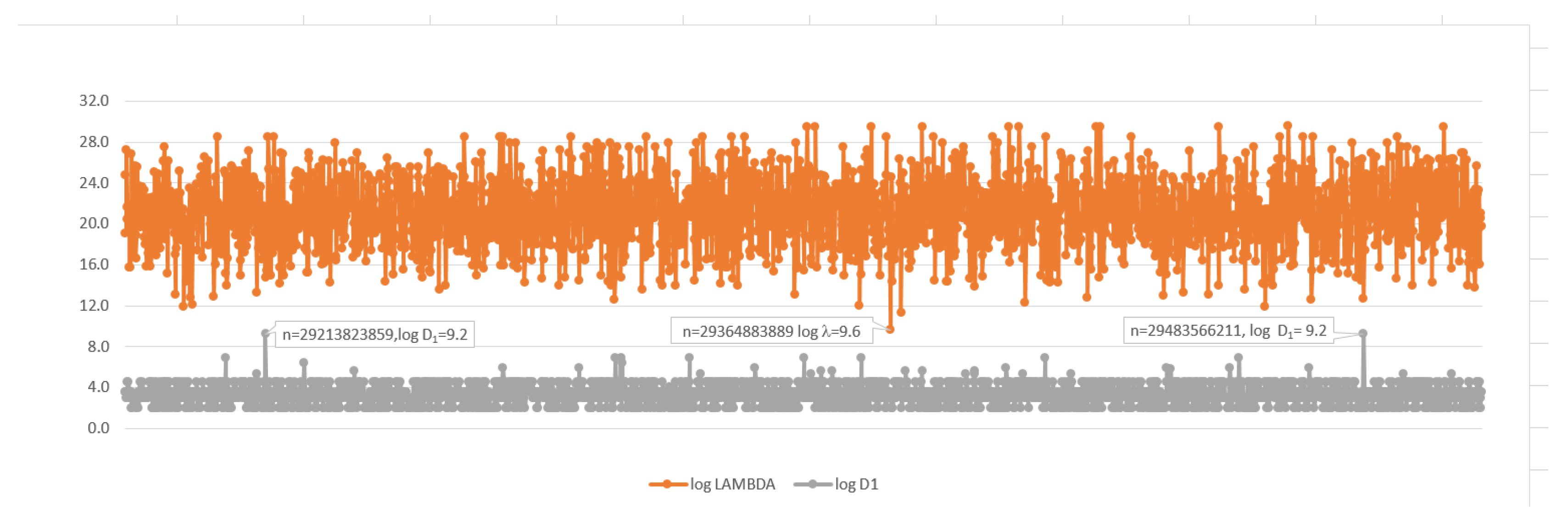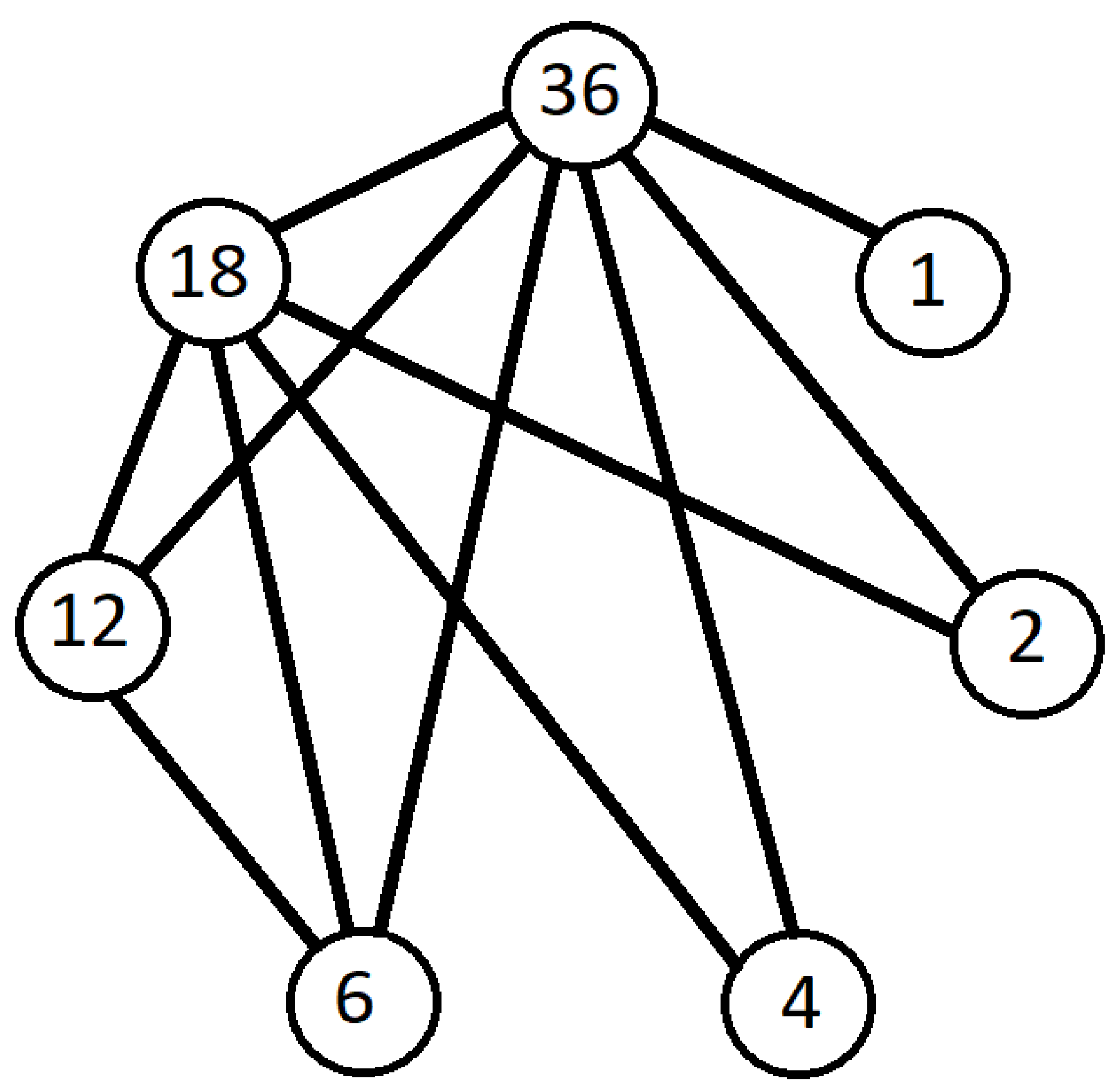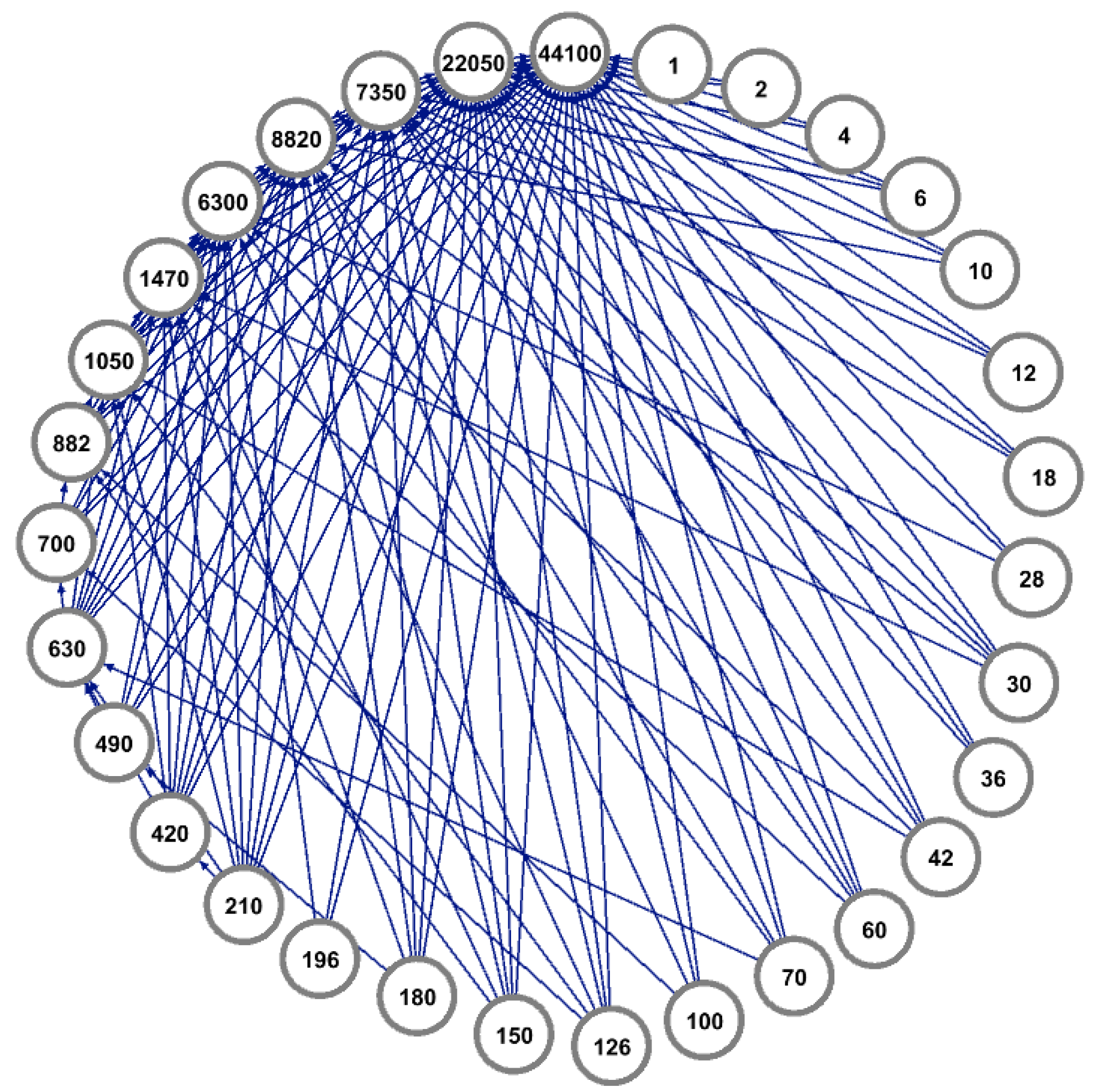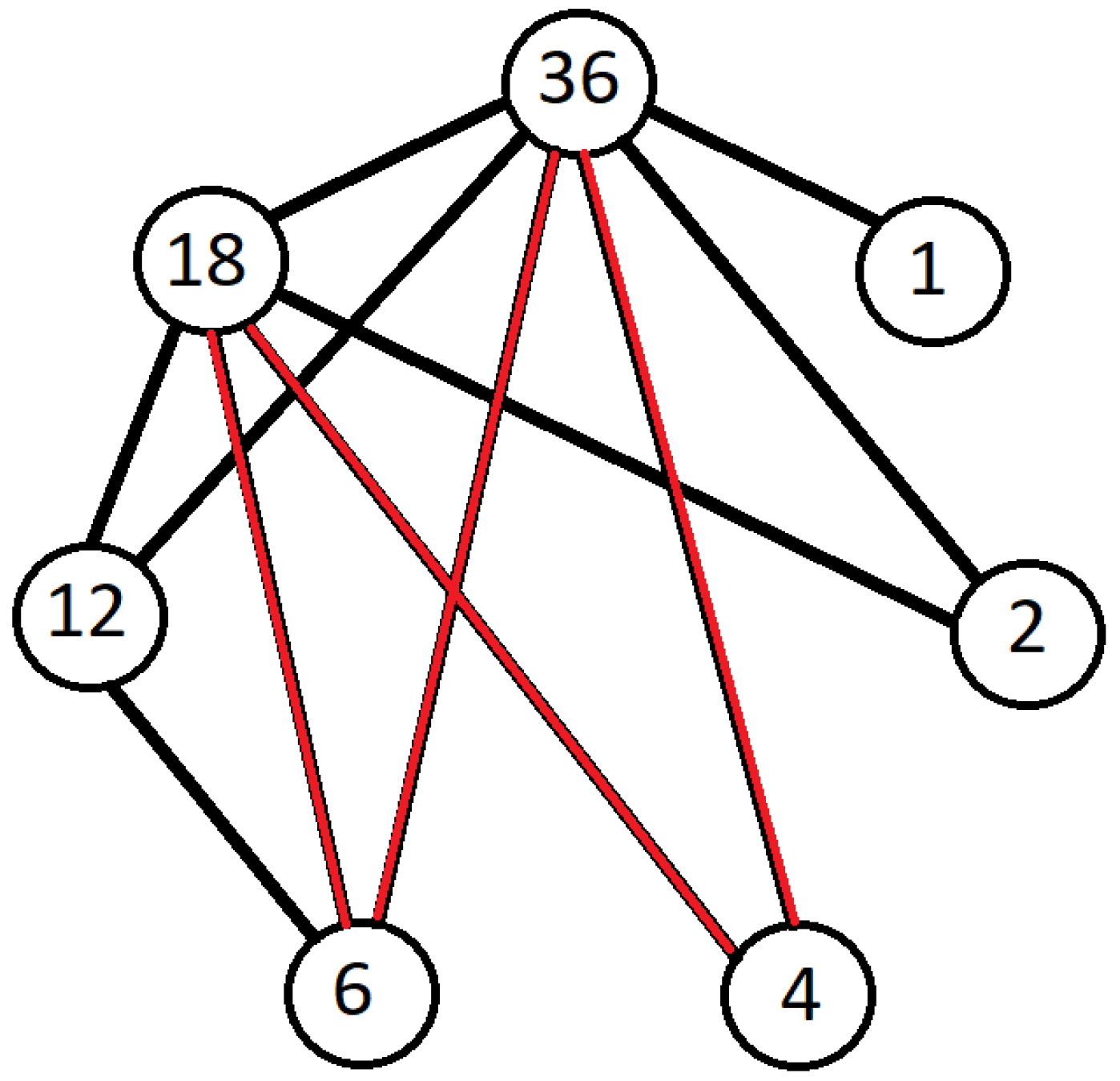3.2. A Structure Theorem for Maximally Idempotent Integers
Let
be an
m-factor maximally idempotent integer,
. Let
(note we are deliberately omitting
). Let
. Consider the first two single-factor equations, where the first term is
, under modulo
. (The equation with a left factor of
is trivially true mod
, so we consider the equations with left factors of
and
). We obtain
(Recall that
). Next, consider the factorization equation
. By the requirements of maximal idempotency, we have
Multiplying this equation by N and then subtracting the previous result, we get
Applying this to the other mod
equations, and then to the other moduli
, we obtain
Letting , it is easily shown that for distinct , we must have , and that a set of distinct positive is a solution . So any maximally idempotent integer has the property .
Since , there are a finite number of m-factor maximally idempotent integers with a given and .
The results above are expressed in terms of . We noted previously that for the resulting system of modular equations, . In fact, we may fix any factor, not just . This gives a Ratio Theorem for Maximally Idempotent Integers:
Theorem 2. Let n be a maximally idempotent integer with factors . For any .
The Ratio Theorem means that all but one of the prime factors of maximally idempotent integers are constrained to be within a certain range of one another; there can be at most one outlier. For example, the primes [7, 11, 127, 211, 853] could not form a maximally idempotent integer, because . However, the primes [7, 727, 1453, 2179, 4357] can and do form a maximally idempotent integer. Note for this integer , all of which divide . Note as well that the Ratio Theorem holds.
The Ratio Theorem also has computational implications. It means fixing any two prime factors permits the enumeration of all maximally impotent integers containing those factors.
We have not yet considered the equations corresponding to the factorization
, for moduli
:
These also form a set of modular equations similar to the one considered above. This time the constant C is , which here implies that for any solution we must have .
We sum up the results of this section as a Structure Theorem for Maximally Idempotent Integers:
Theorem 3. Let be a maximally idempotent integer with m factors, prime. Let . n must satisfy the following conditions:
(1)
(2)
We emphasize that these are necessary conditions, but not sufficient. [5, 7, 13, 19] satisfies both criteria, but does not form a maximally idempotent integer.
The smallest possible value of is . Thus, for small , condition 2 will most likely be met when is at or close to . For example, the four smallest maximally idempotent integers with and are 137,555 = 5*11*41*61, 356,595 = 5*19*37*73, 5,521,745 = 5*29*113*337, and 23,988,515 = 5*59*233*349. In these cases, is either or . For and , the smallest maximally idempotent integer is 146,168,311,505 = 5*101*401*601*1201, with at the minimum value . Similarly, for the previously considered maximally idempotent example 70,200,928,349,251 = 7*727*1453*2179*4357, also has minimum value of . Note that both these examples meet Condition 1. We will have more to say about the value of in the sections that follow.
Condition 1 imposes a crude lower limit on
as a function of
m, in that
must contain at least
divisors. These limits for small
m are shown in the
Table 5 below:
In some cases, tighter bounds have already been established by the work previously shown. Cases where gaps remain are offered as open problems.
3.4. Finding Maximally Idempotent Integers
The equations of idempotency have some redundancy. In particular, let and be a factorization of n. Because , any may be moved from to without affecting the product mod . Thus, in addition to the explicit equivalence equation of a given factorization, there are implied equivalences mod . If equations are chosen such that a given equivalence is implied for all , then it holds for even if it is not explicitly given (recall that ).
This has implications when testing for maximal idempotency. For example, only the single factor equations need to be tested for , as they imply the three double factor ones. For , only 12 of the possible 15 equations need be tested, and so forth.
However, based on the results regarding and above, it is empirically more efficient to check the single factor equations first. If any one of them fail, n is not maximally idempotent. If they all pass, then the double factorizations can be checked, and so forth. It is also more efficient to compute one equation at a time. If the current value ever drops below , further testing is not required since can never divide it.
One way to find maximally idempotent integers is to simply iterate through a range of integers n, factor them, calculate for the ones that are square free, and then see if the equations for maximal idempotency are satisfied. As this requires factoring, this is computationally intensive. A more productive approach is to start with the primes in a given range and test products for etc. In particular, we may fix and and then identify all the maximally idempotent integers with factors inclusively between those two values.
Based on the results previously discussed, we may expect maximally idempotent integers to be found only when is at a local minimum ( or a small multiple thereof) and the ’s are at a local maximum. This confirmed in the figures below, which show and as a function of n. Logarithmic values are used due to the differences in magnitude between and .
Figure 1 shows this plot for
. The orange data set is the log of
, the gray is the log of
. Each data point is for a value of
, sorted in increasing order. The values of
n where
are marked with vertical lines. The value of that ratio is read from the right vertical axis. Red lines correspond to those cases where
is an integer, and indicate all the maximally idempotent integers in this range.
Figure 2 shows these lines alone, along with their data values. The left value in each label with a reciprocal integer ratio (indicated with a red line) is a maximally idempotent integer.
Figure 3 and
Figure 4 show similar plots with
. Increasing the number of factors to 4 increases the number of data points, but it also increases
as it starts to pull away from
. (Recall that logarithmic scales are used, making the absolute difference exponentially larger than that depicted in the figure). The overall effect is to decrease the number of integers with
. We note, however, that the proportion of those integers which are maximally idempotent increases. We conjecture this ratio approaches 1 with increasing
m.
Figure 5 increases
from 7 to 11. Increasing
increases the average
slightly, but significantly increases
. It also reduces the number of candidates that can satisfy the Ratio Theorem. The overall effect is a net decrease in the number of integers with
, and therefore the number of maximally idempotent integers. No maximally idempotent integers exist in this range with
.
Figure 6 increases
from 97 to 199. Doubling
increases the number of candidates in the combinatorially expected manner, which increases the probability of an maximally idempotent integer being found. On the other hand, their asymptotic density decreases. We conjecture the asymptotic density of maximally idempotent integers for a given
approaches zero. It is unknown if for a given
for which an maximally idempotent integer exists, there is a maximum
beyond which no more maximally idempotent integers can be found, or if there are infinitely many.
Figure 7 further increases
m to 6, showing the smallest 6-factor maximally idempotent integer in the given range (indicated with a red circle). This is the entry for
in
Table 2. The black rectangle appears to indicate a second example, but that is an artifact of scale, due to both the large number of points on the x axis (approximately 750 million) and the logarithmic scales employed on the y axis. While in both of the indicated areas there are
values at the maximum of 600, with
, the minimum
in the rectangle is 760,
. The apparent match in the rectangle is in fact a local minimum
between two local maximum
.
Figure 8 makes this clearer.
Thus, there is only one maximally idempotent integer with in the indicated range, the smallest one with 6-factors. There are none with . We conjecture there are no other maximally idempotent integers with for .
